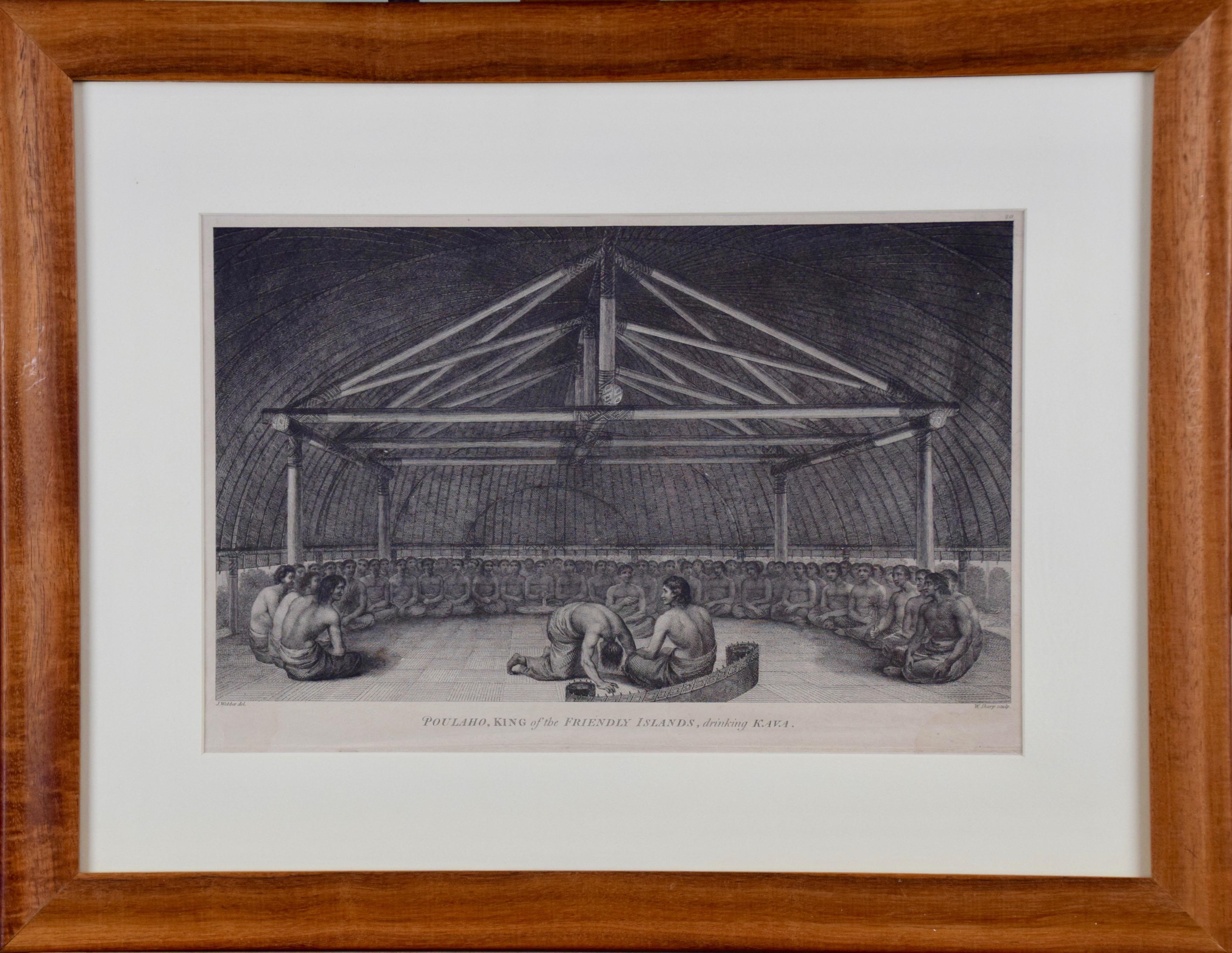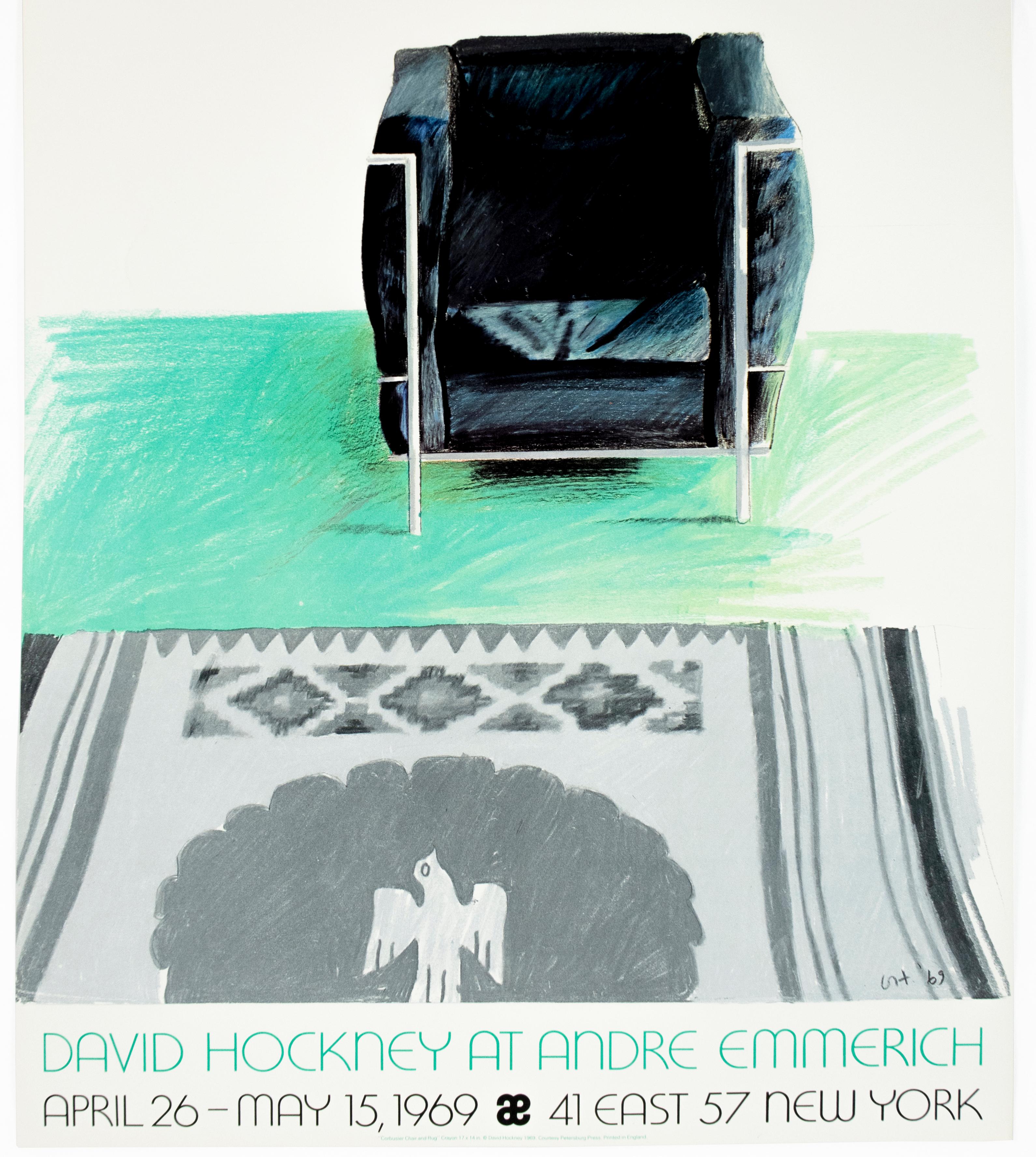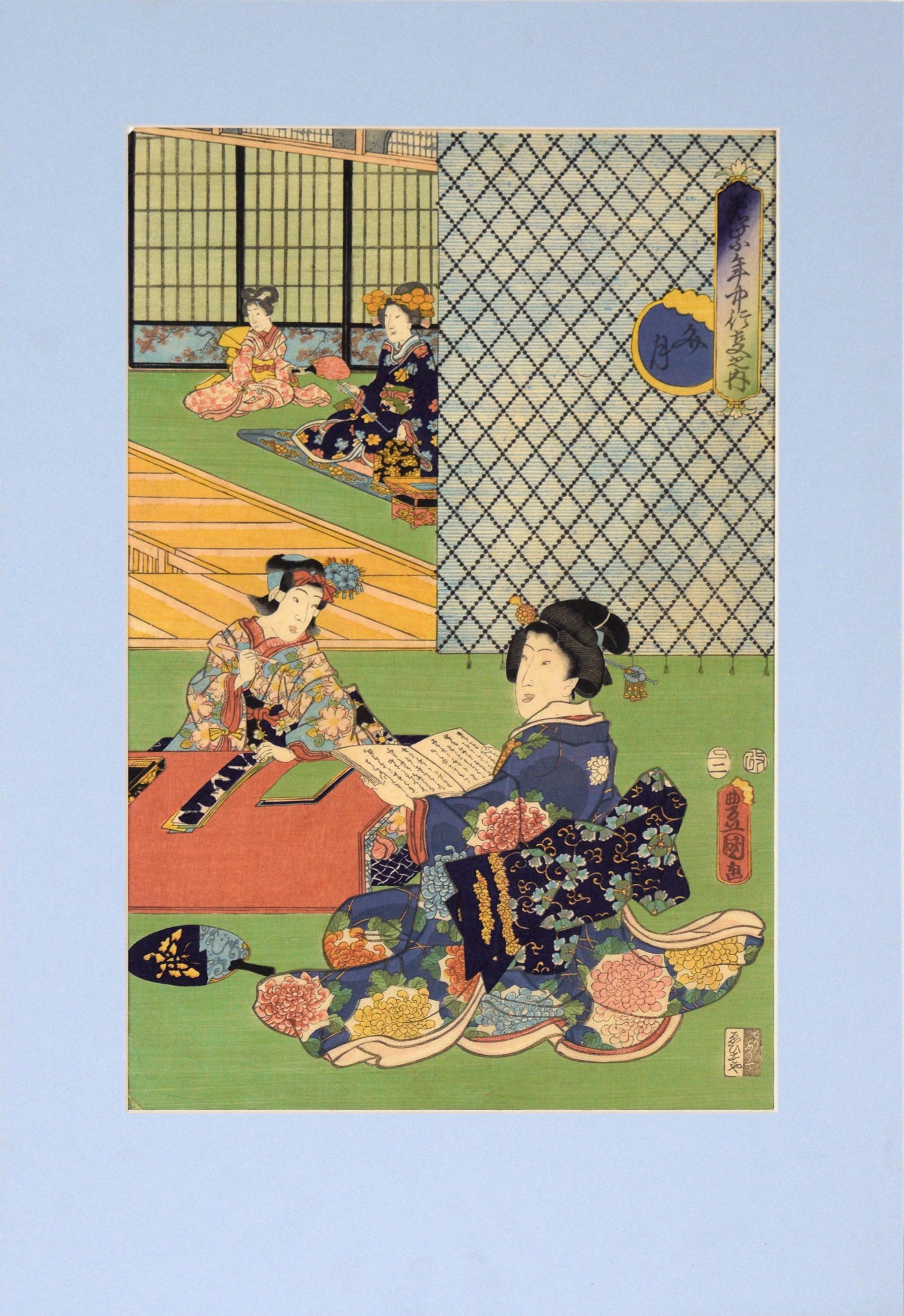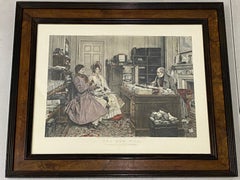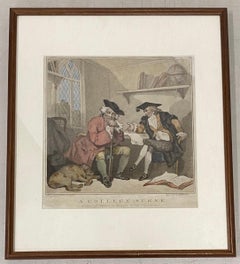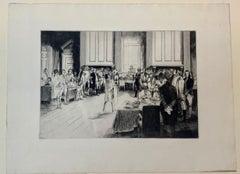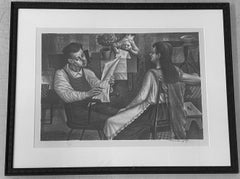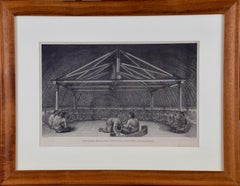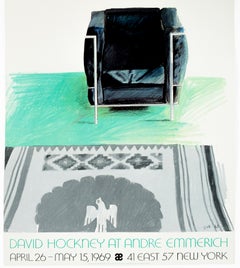Items Similar to G. Paterson "Dinner Party at a Mandarin's House" Engraving After T. Allom c.1840
Want more images or videos?
Request additional images or videos from the seller
1 of 14
UnknownG. Paterson "Dinner Party at a Mandarin's House" Engraving After T. Allom c.1840Circa 1840
Circa 1840
About the Item
G. Paterson "Dinner Party at a Mandarin's House" Original Engraving After T. Allom C.1840
Original engraving
Dimensions 8" wide x 5" high
The frame measures 20.5" wide x 18.5" high
Good antique condition - Lightly distressed gilded vintage frame
- Creation Year:Circa 1840
- Dimensions:Height: 18 in (45.72 cm)Width: 20.5 in (52.07 cm)Depth: 0.5 in (1.27 cm)
- Medium:
- Movement & Style:
- Period:
- Condition:Lightly distressed vintage frame.
- Gallery Location:San Francisco, CA
- Reference Number:1stDibs: LU137827231012
About the Seller
4.9
Vetted Professional Seller
Every seller passes strict standards for authenticity and reliability
1stDibs seller since 2020
511 sales on 1stDibs
Typical response time: 3 hours
- ShippingRetrieving quote...Shipping from: San Francisco, CA
- Return Policy
Authenticity Guarantee
In the unlikely event there’s an issue with an item’s authenticity, contact us within 1 year for a full refund. DetailsMoney-Back Guarantee
If your item is not as described, is damaged in transit, or does not arrive, contact us within 7 days for a full refund. Details24-Hour Cancellation
You have a 24-hour grace period in which to reconsider your purchase, with no questions asked.Vetted Professional Sellers
Our world-class sellers must adhere to strict standards for service and quality, maintaining the integrity of our listings.Price-Match Guarantee
If you find that a seller listed the same item for a lower price elsewhere, we’ll match it.Trusted Global Delivery
Our best-in-class carrier network provides specialized shipping options worldwide, including custom delivery.More From This Seller
View AllJames Dobie "The New Will" Color Engraving After Walter Dendy Sadler c.1894
Located in San Francisco, CA
James Dobie "The New Will" Color Engraving After Walter Dendy Sadler c.1894
Original 19th century color engraving
Engraved by James Dobie after artwork b...
Category
Late 19th Century Interior Prints
Materials
Engraving
Edward Williams "A College Scene" After Thomas Rowlandson Color Engraving C.1787
By Thomas Rowlandson
Located in San Francisco, CA
Edward Williams "A College Scene" After Thomas Rowlandson Color Engraving C.1787
Late 18th century hand colored engraving after Thomas Rowlandson
A scene of a young student asking ...
Category
Late 18th Century Figurative Prints
Materials
Engraving
John Winkler "The Constitutional Convention" Original Signed Etching c.1932
Located in San Francisco, CA
John Winkler "The Constitutional Convention" Original Signed Etching c.1932
Plate dimensions 13.75" wide x 9.5" high
Paper dimensions 19.75" wide x 14....
Category
Early 20th Century Interior Prints
Materials
Etching
Ture Bengtz "Family Scene" Original Pencil Signed Lithograph C.1940
By Ture Bengtz
Located in San Francisco, CA
Ture Bengtz "Family Scene" Original Pencil Signed Lithograph C.1940
Lithograph dimensions 15.25" wide x 10.5" high
Frame dimensions 21.5" wide x 17" high
Pencil signed in the lowe...
Category
Early 20th Century Figurative Prints
Materials
Lithograph
Picasso at Vauvenargues 1962 by David Douglas Duncan
Located in San Francisco, CA
David Douglas Duncan: 1916-2018. Well listed photographer who had rare access to Picasso. He took numerous photos of the master at work, and at pl...
Category
1960s Figurative Photography
Materials
Offset
Kerr Eby Shepherd and His Flock
By Kerr Eby
Located in San Francisco, CA
Kerr Eby: 1889-1946. Very well listed Canadian American artist. He is best known as a printmaker for his fabulous etchings. He has auction results over $6300 for a single print. This...
Category
Early 20th Century Realist Animal Prints
Materials
Etching
You May Also Like
"King of the Friendly Islands" (Tonga); Engraving from Captain Cook's 3rd Voyage
By John Webber
Located in Alamo, CA
"Poulaho, King of the Friendly Islands, Drinking Kava" is an engraving created by William Sharp (1749-1824), from a drawing by John Webber (1752-1793), who was the artist on Captain James Cook's 3rd and final voyage of discovery. It was published in the atlas of "A Voyage to the Pacific Ocean Undertaken by the Command of His Majesty, for Making Discoveries in the Northern Hemisphere", the official British Admirality sanctioned journal published upon completion of the voyage in London in 1784 by Strahan & Cadell.
Captain Cook visited Tonga on his 3rd voyage, which he named The Friendly Islands because of the warm welcome he and his crew received, unlike some of the other more hostile Pacific islands. The engraving depicts Cook and his men observed a kava ceremony at the village of Mu’a on Tongatapu. King Paulaho sits in the centre foreground, his back to the spectator with a man kneeling before him. The ceremonial mat depicted behind Paulaho indicates that nobody was allowed to sit behind him. The figure in the centre holds a single cup, referring to the Tongan custom of offering the cup to the king first. Kava is native to the islands of the South Pacific and was first described for English readers in 1768 by Captain James Cook. The kava root has been used for centuries as a central feature of ceremonies and celebrations because it was able to bring about a calming and pleasant social atmosphere. The root was crushed and processed into coconut milk to become the focal ceremonial beverage, simply referred to as kava.
This engraving is presented in a Koa wood frame and a white mat. Koa wood is legendary in Hawaii. There are occasional faint spots, but the print is otherwise in very good condition. This amazing Koa wood is native to Hawaii and it is known for the deep rich colors and varied grain pattern. Koa has an honored heritage in Hawaii and is highly revered and sacred. The word “koa” means “warrior” in Hawaiian. The warriors of King Kamehameha the Great, created canoes and weapons from a wood plentiful on the Big Island of Hawaii. This wood became synonymous with the warriors themselves, and it became known as koa.
There are three other engravings listed from the official journal of Captain Cook's 3rd voyage available that are presented in identical Koa wood frames and mats (LU117324682422, LU117324684052, LU117324684032). They would make a wonderful grouping for a display of 2, 3 or 4 prints. A discount is available for a grouping depending on the number of items included.
Captain Cook is remembered as one of the greatest explorers and navigators in history. His explorations included Australia, New Zealand and islands of the South Pacific and the northwest coast of North America. Hawaii was discovered by Captain Cook during this voyage. Hawaii was originally called The Sandwich Islands in honor of The Earl of Sandwich...
Category
1780s Realist Figurative Prints
Materials
Engraving
In a tavern. Paper, engraving, 21x25 cm
By Adriaen van Ostade
Located in Riga, LV
In a tavern.
engraver Jan De Visscher (1933-1692)
Paper, engraving, 21x25 cm
Category
17th Century Realist Figurative Prints
Materials
Paper, Engraving
$1,349 Sale Price
20% Off
Jan Oytenbogaert
By Rembrandt van Rijn
Located in San Francisco, CA
This artwork titled Jan Uytenbogaert" 1639 is an etching on paper After Rembrandt Van Rijn, 1606-1669, plate engraved By French renown engraver Charles Armand Durand, 1831-1905. Sign...
Category
17th Century Realist Figurative Prints
Materials
Etching
Vintage Le Corbusier '69 David Hockney Exhibition Poster Kilim southwest rug
By (after) David Hockney
Located in New York, NY
Shading in bright turquoise above a Southwestern style thunderbird Kilim rug adorns this original exhibition poster for David Hockney's 1969 show at Andre Emmerich, New York. This po...
Category
1960s Realist Interior Prints
Materials
Lithograph
Annual Events for Young Murasaki (July) - Tales of Genji - Japanese Woodblock
By Utagawa Kunisada (Toyokuni III)
Located in Soquel, CA
Annual Events for Young Murasaki (July) - Tales of Genji - Japanese Woodblock
Rightmost panel a triptych, depicting monthly events for Wakamurasaki (Young Murasaki). This is the month of July. There appears to be a lesson taking place, possibly for writing or poetry.
Artist: Toyokuni III/Kunisada (1786 - 1864)
Publisher: Ebisu-ya Shoshichist
Presented in a new blue mat.
Mat size: 19"H x 13"W
Paper size: 14.5"H x 10"W
Commentary on the triptych:
In the Edo period, Tanabata was designated as one of the five seasonal festivals, and became an annual event for the imperial court, aristocrats, and samurai families, and gradually came to be celebrated by the general public. Its origins are said to be a combination of the Kikoden festival, which originated from the Chinese legend of Altair and the Weaver Girl, and Japan's ancient Tanabata women's faith. Ink is ground with dew that has accumulated on potato leaves, poems and wishes are written on five colored strips of paper, which are then hung on bamboo branches to celebrate the two stars that meet once a year. Although the illustration is a Genji painting...
Category
1850s Realist Figurative Prints
Materials
Printer's Ink, Rice Paper, Woodcut
Scene Galante au XVIII eme Siecle #1
By Antoine Calbet
Located in San Francisco, CA
This artwork titled "Scene Galante au XVIII eme Siecle" c.1930 in an aquatint on paper by French artist Antoine Calbet, 1860-1944. It is hand signed in pencil at the lower right corner. The plate mark (image) size is 9.60 x 12.25 inches, framed size is 16.5 x 19.5 inches. Framed in a wooden gold and black frame, with fabric matting. The artwork is in very good condition, frame and matting are in good condition, frame have some minor dents, matting have a small point of discoloration at upper left.
About the artist.
Antoine Calbet is the son of Marie Singlande and Jean-Baptiste Calbet, landowner at a place called Gaubert.
Trained at the School of Fine Arts in Montpellier by Édouard - Antoine Marsal (1845-1929) where he learned drawing, this illustrator and illustrator, a painter of nudes and gallant scenes, was very popular during his lifetime.
Antoine Calbet is then admitted to the School of Fine Arts in Paris in the studio of Alexandre Cabanel (1823-1889). He was a member of the admission jury of the Beaux-Arts from 1913 to 1930. He began to exhibit in 1880 and became a member of the Society of French Artists . He was the friend of his compatriot of Lot-et-Garonne, the President of the Republic Armand Fallières , for which he drew the menus of his meals, which made him known in Parisian salons.He illustrated works by Jean Lorrain , Henri de Regnier , Pierre Loues 3 and for periodicals like L'Illustration .
Selected museums and collections
Dallas , Dallas Museum of Art : Back woman...
Category
Mid-20th Century Realist Figurative Prints
Materials
Aquatint
